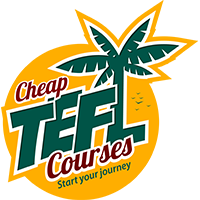![[object Object]](https://www.cheapteflcourses.com/wp-content/uploads/2025/10/7692504-3.jpg)
So, you’ve been teaching English abroad for a year or more. The initial thrill of living in a new country is now paired with a pressing question: “What’s next?” Moving from short-term contracts to a stable, rewarding career in education is a common goal. It’s time to build a future, not just another job.
If you’re ready to transition from casual EFL teaching to a dedicated profession, you’re in the right place. Let’s break down the pathways to leveling up your teaching career.
🎓 The Master’s Degree Dilemma: M.Ed. vs. MA TESOL
A master’s degree is a powerful tool for career advancement. But which one is the right key for the door you want to open?
- Master of Education (M.Ed.): This degree is often the golden ticket for career progression within the school system. It’s broadly focused on educational theory, leadership, and curriculum development.
- Master of Arts in TESOL: This degree is highly specialized in the theory and practice of teaching English. It’s perfect for becoming an expert in your current field.
The choice depends entirely on your ultimate career destination.
🌍 Question #1: Where Should You Get Your Degree?
This is a crucial strategic decision. The prestige and recognition of your degree can significantly impact your job prospects.
- Degrees from “Native-Speaker” Countries: There’s an undeniable bias in the international school and university sector. A degree from the UK, US, Canada, or Australia often carries more weight on a CV. Many top-tier jobs explicitly require teaching experience from your home country, which is easier to fulfill with a degree from there.
- The Online & Hybrid Option: Don’t overlook reputable, accredited online programs from Western universities. They offer a fantastic balance of recognized qualifications and the flexibility to continue working (and earning) while you study.
The Bottom Line: Investing in a degree from a well-regarded institution in a major English-speaking country can open more doors globally.
❓ Question #2: Can You Jump Straight to an M.Ed.?
Your undergraduate degree was in Journalism and Marketing—can you still pursue a Master of Education?
The short answer is: Yes, absolutely.
Many M.Ed. and MA TESOL programs are designed as conversion courses. They welcome students from diverse academic backgrounds who have relevant teaching experience. Your CELTA and year(s) of in-classroom experience are valuable assets that make you a strong candidate.
- Always check the specific entry requirements for your chosen programs.
- Be prepared to highlight your practical teaching experience in your application.
🏫 Question #3: International Schools vs. University Jobs
This is the core of your career planning. What kind of “hardcore teaching” do you want to do?
The International School Route
An MA TESOL alone will not typically qualify you for a core subject teacher position at a reputable international school.
- The Non-Negotiable Requirement: International schools primarily seek state-issued teaching licenses (e.g., a QTS from the UK or a state license from the US).
- Your Pathway: To enter this world, you would likely need to pursue a licensing program like PGCEi or a more comprehensive PGCE with QTS, often in conjunction with or after an M.Ed. This pathway leads to teaching subjects like Science, Math, or English Literature, not just ESL.
The University & Adult Education Route
An MA TESOL is the standard and often essential qualification for teaching at universities, colleges, and specialized language institutes for adults.
- It positions you as a subject-matter expert.
- It can lead to roles in curriculum design, teacher training, and academic management.
- This path leverages your existing TEFL/CELTA skillset and deepens it.
🗺️ Your Action Plan: Charting the Course
- Define Your Goal: Do you see yourself in a high school classroom at an international school, or in a university lecture hall?
- Research Licensure: If it’s international schools, research teaching licenses (PGCE, QTS, US state licensure) first. The master’s degree can often come later.
- Choose Your Degree: Align your master’s with your goal—M.Ed. for school systems, MA TESOL for higher education and specialist roles.
- Select Your Institution: Prioritize accredited, well-recognized universities, considering online options for flexibility.
Taking these structured steps will move you decisively from “just jumping around EFL” to building a long-term, professional teaching career you can be proud of.




